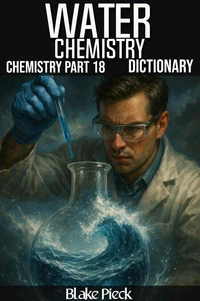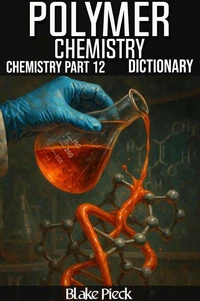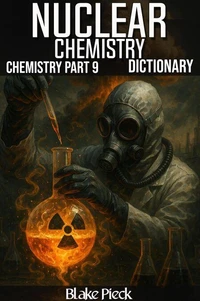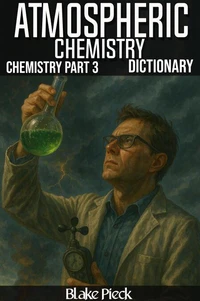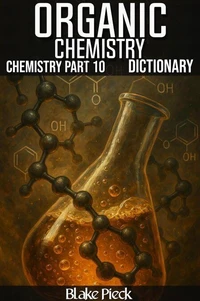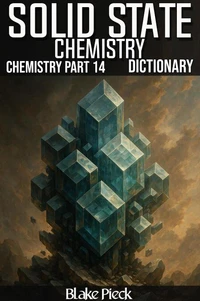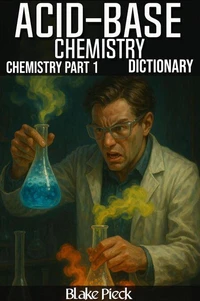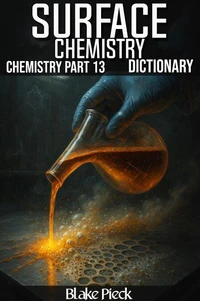Physical Chemistry - Chemistry Part 11 Dictionary. Grow Your Vocabulary
Par :Formats :
Disponible dans votre compte client Decitre ou Furet du Nord dès validation de votre commande. Le format ePub est :
- Compatible avec une lecture sur My Vivlio (smartphone, tablette, ordinateur)
- Compatible avec une lecture sur liseuses Vivlio
- Pour les liseuses autres que Vivlio, vous devez utiliser le logiciel Adobe Digital Edition. Non compatible avec la lecture sur les liseuses Kindle, Remarkable et Sony
 , qui est-ce ?
, qui est-ce ?Notre partenaire de plateforme de lecture numérique où vous retrouverez l'ensemble de vos ebooks gratuitement
Pour en savoir plus sur nos ebooks, consultez notre aide en ligne ici
- FormatePub
- ISBN8231795666
- EAN9798231795666
- Date de parution01/09/2025
- Protection num.pas de protection
- Infos supplémentairesepub
- ÉditeurWalzone Press
Résumé
Physical chemistry investigates how energy and matter interact at both atomic and molecular scales. It examines thermodynamics, kinetics, quantum mechanics, and statistical mechanics to explain why reactions occur, how fast they proceed, and what energy changes accompany them. This branch of chemistry provides the theoretical backbone for understanding phenomena as diverse as combustion, catalysis, and the structure of materials.
As part of the larger chemical sciences, physical chemistry connects experimental observations with mathematical models and predictive theory. It serves as a bridge between chemistry and physics, drawing on equations and principles to interpret laboratory results and guide new discoveries. Through this perspective, learners see how abstract theory translates into practical understanding of chemical systems.
This dictionary collects the core terminology of physical chemistry into structured and accessible entries. It explains concepts ranging from Gibbs free energy and equilibrium constants to reaction rate laws and molecular spectroscopy. Each entry is written with depth and clarity, supporting students in their studies, assisting educators with reliable references, and offering professionals a tool for reinforcing specialized knowledge.
A dictionary format strengthens comprehension by presenting definitions in an organized sequence, allowing readers to build knowledge step by step. Revisiting terms deepens retention and fosters connections between related concepts. With physical chemistry at the heart of interpreting chemical processes, fluency in its vocabulary ensures lasting benefits for education, research, and professional growth.
As part of the larger chemical sciences, physical chemistry connects experimental observations with mathematical models and predictive theory. It serves as a bridge between chemistry and physics, drawing on equations and principles to interpret laboratory results and guide new discoveries. Through this perspective, learners see how abstract theory translates into practical understanding of chemical systems.
This dictionary collects the core terminology of physical chemistry into structured and accessible entries. It explains concepts ranging from Gibbs free energy and equilibrium constants to reaction rate laws and molecular spectroscopy. Each entry is written with depth and clarity, supporting students in their studies, assisting educators with reliable references, and offering professionals a tool for reinforcing specialized knowledge.
A dictionary format strengthens comprehension by presenting definitions in an organized sequence, allowing readers to build knowledge step by step. Revisiting terms deepens retention and fosters connections between related concepts. With physical chemistry at the heart of interpreting chemical processes, fluency in its vocabulary ensures lasting benefits for education, research, and professional growth.
Physical chemistry investigates how energy and matter interact at both atomic and molecular scales. It examines thermodynamics, kinetics, quantum mechanics, and statistical mechanics to explain why reactions occur, how fast they proceed, and what energy changes accompany them. This branch of chemistry provides the theoretical backbone for understanding phenomena as diverse as combustion, catalysis, and the structure of materials.
As part of the larger chemical sciences, physical chemistry connects experimental observations with mathematical models and predictive theory. It serves as a bridge between chemistry and physics, drawing on equations and principles to interpret laboratory results and guide new discoveries. Through this perspective, learners see how abstract theory translates into practical understanding of chemical systems.
This dictionary collects the core terminology of physical chemistry into structured and accessible entries. It explains concepts ranging from Gibbs free energy and equilibrium constants to reaction rate laws and molecular spectroscopy. Each entry is written with depth and clarity, supporting students in their studies, assisting educators with reliable references, and offering professionals a tool for reinforcing specialized knowledge.
A dictionary format strengthens comprehension by presenting definitions in an organized sequence, allowing readers to build knowledge step by step. Revisiting terms deepens retention and fosters connections between related concepts. With physical chemistry at the heart of interpreting chemical processes, fluency in its vocabulary ensures lasting benefits for education, research, and professional growth.
As part of the larger chemical sciences, physical chemistry connects experimental observations with mathematical models and predictive theory. It serves as a bridge between chemistry and physics, drawing on equations and principles to interpret laboratory results and guide new discoveries. Through this perspective, learners see how abstract theory translates into practical understanding of chemical systems.
This dictionary collects the core terminology of physical chemistry into structured and accessible entries. It explains concepts ranging from Gibbs free energy and equilibrium constants to reaction rate laws and molecular spectroscopy. Each entry is written with depth and clarity, supporting students in their studies, assisting educators with reliable references, and offering professionals a tool for reinforcing specialized knowledge.
A dictionary format strengthens comprehension by presenting definitions in an organized sequence, allowing readers to build knowledge step by step. Revisiting terms deepens retention and fosters connections between related concepts. With physical chemistry at the heart of interpreting chemical processes, fluency in its vocabulary ensures lasting benefits for education, research, and professional growth.














